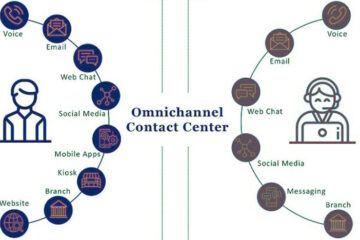As your business grows and the world becomes more digital, you may find that your current IT infrastructure is no longer up to the task. Upgrading your IT infrastructure can help you improve productivity and enhance security. But before you dive into the upgrade process, it’s essential to consider a few things. Here are four things to keep in mind when upgrading your IT infrastructure.
1- The Upgrade Costs
When you’re looking to upgrade your IT infrastructure, there are a few key things to keep in mind—and one of the most important is the cost. Upgrading your IT infrastructure can be a significant investment, and you might even need a working capital loan to keep up with the expenses, so you’ll want to ensure you’re getting the most bang for your buck.
Here are a few things to keep in mind when considering the cost of upgrading your IT infrastructure.
- The Size Of Your Upgrade: The larger the scale of your upgrade, the more it will cost. When budgeting for your upgrade, you’ll need to factor in the cost of new hardware, software, and IT support from professionals.
- The Timing Of Your Upgrade: If you wait until your current system is outdated or no longer supported, you may have to pay a premium for rushed or emergency services. Try to plan your upgrade well in advance to take advantage of discounts and specials.
- The Quality Of Your Upgrade: When it comes to IT infrastructure, you get what you pay for. Investing in high-quality hardware and software will save you money in the long run by reducing downtime and increasing efficiency.
By keeping these factors in mind, you can ensure you get the most accurate budget for your upgrade plans.
2- Working With An IT Provider
If your business grows, you may be considering upgrading your IT infrastructure. It can be a big project, and choosing the right IT provider to work with is essential. Thus, it’s crucial to look at the factors you need to consider. First, what kind of support does the provider offer? Do they have experience with businesses of your size and type? Make sure they’re able to meet your needs.
Second, what are their rates? Upgrading your IT infrastructure can be expensive, so you’ll want to know what the provider charges for their services. Third, how flexible is the provider? Can they tailor their services to your specific needs? Make sure they’re willing to work with you to create a solution that meets your unique requirements.
Finally, don’t forget to ask for references. Talk to other businesses who have used the provider’s services and see if they’re happy with the results. By doing your research, you can find an IT provider who will help make your upgrade project a success. To learn more about managed IT services, visit https://proteksupport.com/it-services/.

3- Hardware Components
Regarding hardware, there are three main components to consider: processors, memory, and storage. Processors are the brains of your computer system, so it’s essential to ensure you have enough power to handle your workload. Memory is used to store data and instructions for the processor, so you’ll need enough to keep your system running smoothly. Storage is where you keep your data and applications, so you’ll need enough space to accommodate your needs.
The type of processor, memory, and storage you need will depend on the work you do with your computer. For example, if you’re a gamer or video editor, you’ll need more powerful components than someone who only uses their computer for email and web browsing. Once you know what hardware you need, you can start shopping around for the best deals. When upgrading your IT infrastructure, it’s essential to consider all of your options carefully.
4- Collaborative Features
There are many things to consider when upgrading your IT infrastructure, but one of the most important is collaborative features. After all, if your goal is to promote collaboration and communication within your organization, you must ensure your infrastructure is up to the task.
First, take a look at the way that your team currently communicates and collaborates. What works well, and what could be improved? Is there a particular tool or service that everyone relies on? If so, ensure that any new infrastructure will be compatible with it. Next, think about the future of collaboration within your organization. Are you planning to expand your team or build new partnerships? If so, you’ll need to ensure that your new infrastructure can accommodate these changes.
Finally, don’t forget about security. As more and more businesses move to the cloud, data security risks are increasing. Data shows that the number of data breach issues went up to 273% in 2020 and became more common in 2021. This year, make sure that any new infrastructure you choose includes robust security features to protect your data and avoid becoming a victim of cybercrimes.
Takeaway
When upgrading your IT infrastructure, there are several factors to consider. First, think about your budget and what you can afford to spend. Next, choose the right IT provider to work with. Finally, consider the hardware components and the collaborative features you want. By taking the time to plan carefully, you can ensure that your upgrade project is a success.



0 Comments